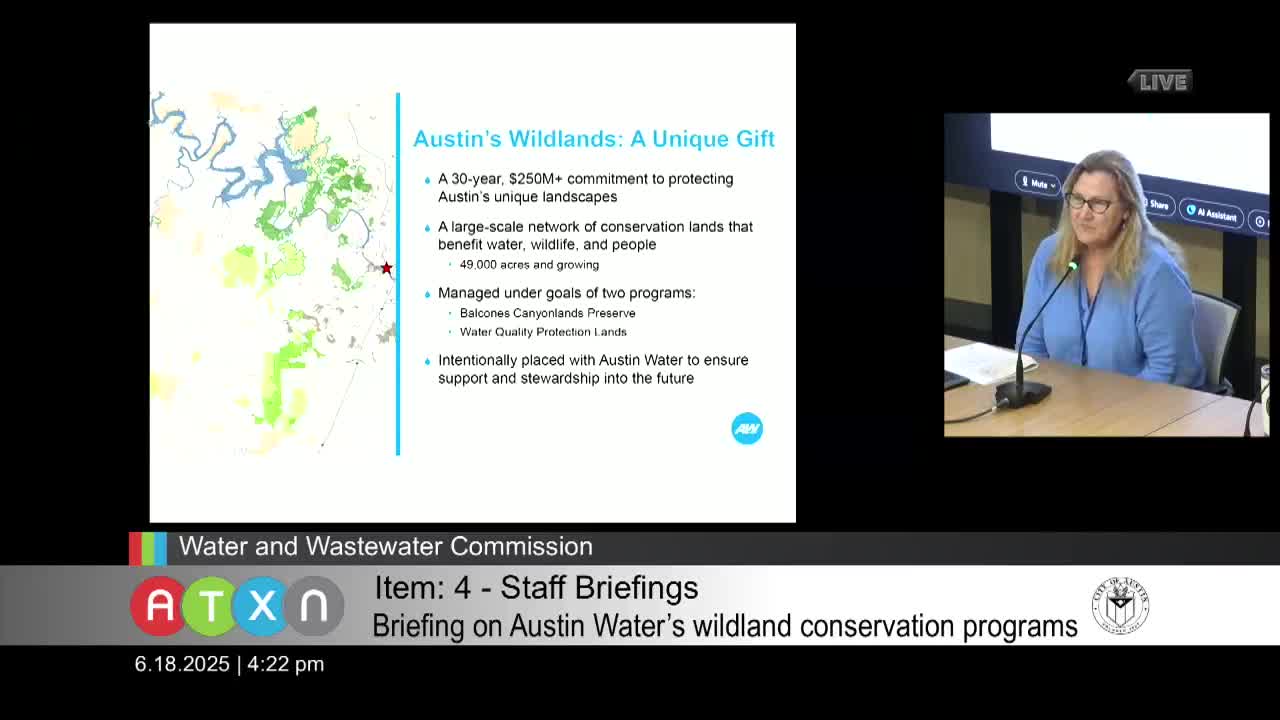Austin Water Agency secures land for Balcones Canyonlands Preservation and water protection efforts
June 18, 2025 | Austin, Travis County, Texas
Thanks to Scribe from Workplace AI , all articles about Texas are free for you to enjoy throughout 2025!

This article was created by AI using a video recording of the meeting. It summarizes the key points discussed, but for full details and context, please refer to the video of the full meeting. Link to Full Meeting
The BCP serves as a countywide habitat conservation plan, allowing for streamlined development processes while ensuring the protection of endangered species habitats. This dual focus on conservation and development is crucial as Austin continues to grow. The commission noted that the BCP has successfully permitted over 1,500 landowners and more than 400 infrastructure projects, including a recent water treatment plant that benefited from in-house permitting, saving both time and money.
The partnership between the City of Austin and Travis County is pivotal in managing the BCP, with additional support from organizations like The Nature Conservancy and the Travis Audubon Society. This collaborative effort has resulted in the protection of over 32,000 acres, which is essential for maintaining green spaces amid urban development. The commission also addressed ongoing challenges, such as the need to protect 62 named caves, of which 52 have been secured, and the importance of acquiring land from willing sellers to expand conservation efforts.
Another key topic was the Water Quality Protection Lands Program, which aims to protect the recharge areas for Barton Springs, a vital water source for the region. The program has successfully safeguarded about a quarter of the recharge zone, ensuring high-quality water flows into the aquifer that serves both Austin and surrounding areas.
As the commission continues to navigate the complexities of land management and development, the discussions underscored the importance of balancing growth with environmental stewardship. The ongoing efforts to protect these critical habitats and water resources will play a significant role in sustaining Austin's natural environment and ensuring the community's long-term water security. The commission's next steps will likely involve further collaboration with stakeholders and continued monitoring of conservation efforts to meet the evolving needs of the region.
Converted from Austin - Water and Wastewater Commission - Jun 18, 2025 meeting on June 18, 2025
Link to Full Meeting
Comments
View full meeting
This article is based on a recent meeting—watch the full video and explore the complete transcript for deeper insights into the discussion.
View full meeting
